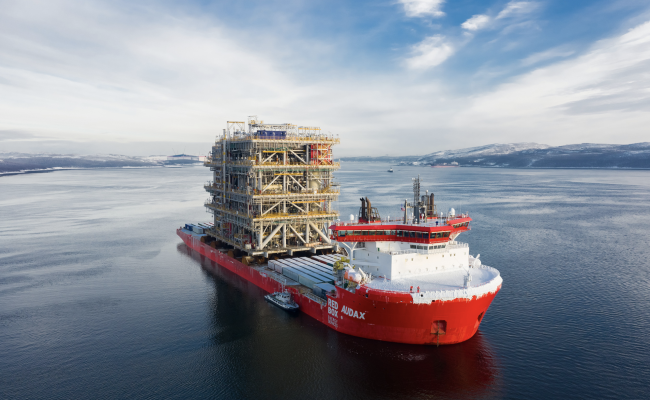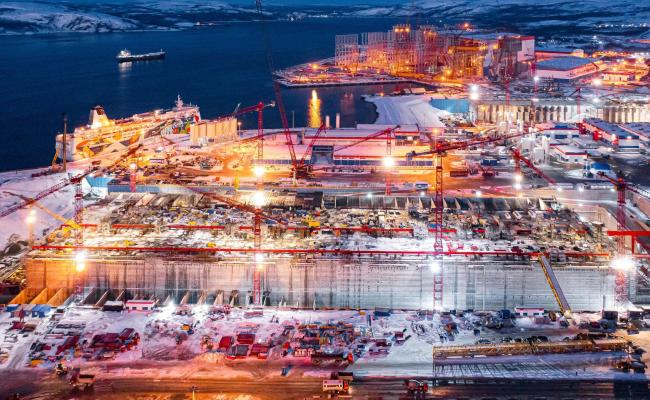Delivery of Final Modules for Russia’s Arctic LNG 2 Project Highlights Challenge of Designing Effective Sanctions
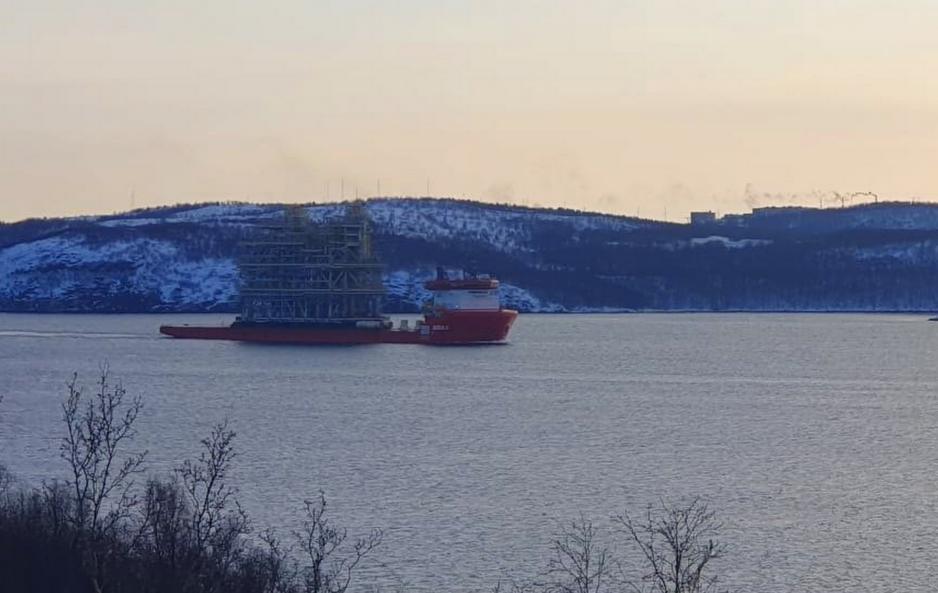
Audax traveling up Kola Bay to Belokamenka. (Source: Belokamenka VK page, via user Bekzod Turaev)
Russia’s Arctic LNG 2 energy project offers a masterclass in how difficult it is to design effective sanctions. Despite multiple rounds of blocking measures, pre-assembled modules continue to travel from China to Russia, and shipping company Red Box opines it is not violating international rules.
In a game of Arctic cat and mouse the US, the UK, and to a lesser extent the EU, continue to slap Russian gas producer Novatek’s Arctic LNG 2 project and its suppliers with escalating sanctions. But their efforts have thus far been unable to definitively shutter the facility’s construction and both non-Western and Western companies continue to provide their services to the project.
Initially Chinese shipyards ceased assembly of massive modules following sanctions in 2022 before resuming construction months later. France’s Technip for months kept supplying key equipment and services with apparent tacit approval by the French government.
Similarly, Singaporean shipping operator Red Box resumed deliveries of pre-assembled modules aboard its two specialized heavy lift vessels Audax and Pugnax in summer 2023. Since sanctions against the transfer of liquefied natural gas (LNG) technology came into effect in May 2022 the vessels have carried five modules from shipyards across China to an assembly yard near Murmansk in Russia.
Last week the ships delivered two of the final modules for the project, after a challenging month-long journey along the ice-covered waters of the Northern Sea Route (NSR).
We are just delivering “steel structures”
In correspondence with HNN the company’s CEO Philip Adkins is adamant that Red Box is in no shape or form violating sanctions as it is simply delivering “steel structures” from point A to point B. He says Red Box “maintains no contractual relationship” with any sanctioned entity: neither with Novatek, which majority-owns Arctic LNG 2, nor with Belokamenka, the assembly yard near Murmansk, nor with Russian state owned Rosatomflot, which provided extensive nuclear icebreaker escorts for Audax and Pugnax along the NSR.
The fact that the company has been able to continue delivering “steel structures” critical to the completion of Arctic LNG 2 highlights the difficulty in designing effective sanctions to stop the flow of technology and equipment to the project.
Audax and Pugnax picked up two modules in early January 2024 from the PengLai Jutal Offshore Engineering Heavy Industries Co. Ltd. (PJOE) shipard in Penglai in northeastern China. A third module departed days later aboard the Chinese heavy lift carrier Hunter Star. These three modules complete the second production line of Arctic LNG 2 consisting of 14 modules in total. A third line has for now been shelved by Novatek.
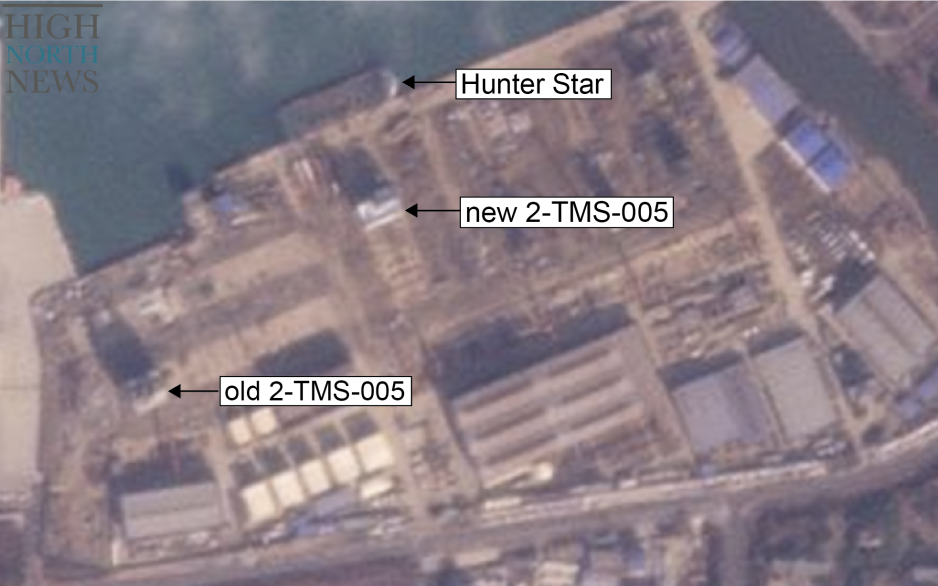
PengLai Jutal Offshore Engineering Heavy Industries Co. Ltd. (PJOE) yard in China on 14 January 2024 showing loading of the new TMS-005 module under way. (Source: Planet.com)
Based on satellite images, multiple industry sources, including those familiar with engineering work at Belokamenka, and Novatek project documents, Red Box’s vessels carried modules TMS-003 and TMS-004, part of the plant’s refrigeration process that turns gas into its liquefied counterpart.
Audax and Pugnax arrived at Belokamenka last week and transferred the modules to the Material Offloading Facility or MOF. Here they will be integrated onto a floating production platform the size of eight soccer pitches.
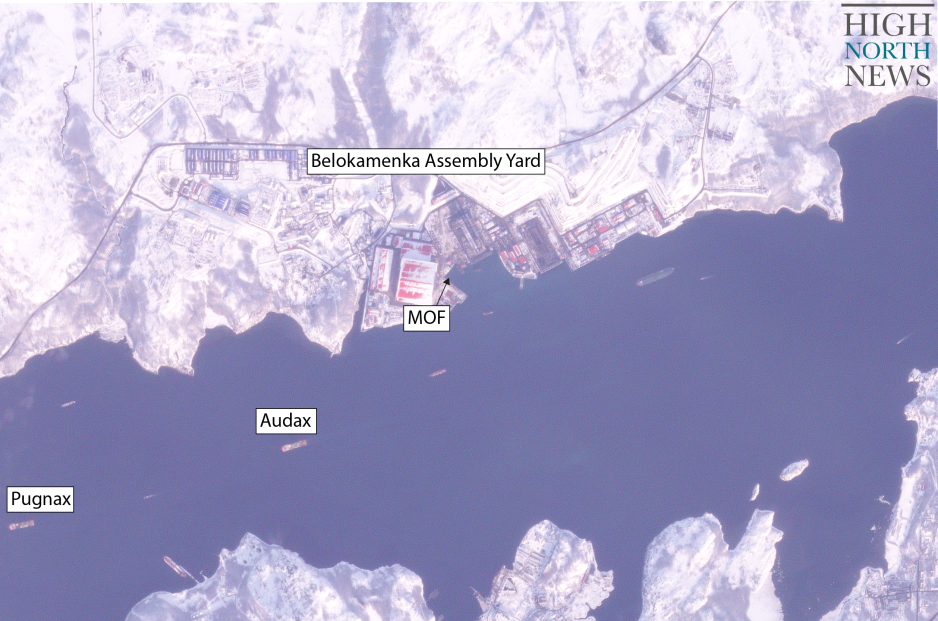
Satellite image from February 27, 2024 showing Audax and Pugnax outside Belokamenka in the Russian Arctic, awaiting offloading. (Source: Planet.com)
In a sense Adkins is not wrong when he says that Red Box is simply delivering “steel structures.”
However, the structures are carefully engineered to house hundreds of millions of USD of equipment to compress and produce LNG. Each module can weigh up to 14,000 tons.
When does it become more than a “steel structure?”
The two modules delivered to Belokamenka last week are designed to accommodate gas turbines driving compressors and house refrigeration string A and B, Novatek documents show. The refrigeration process was subsequently re-designed to replace gas turbines with electric drives when American supplier Baker Hughes did not deliver the required gas turbines.
As such the modules should fall under the EU’s 5th round of sanctions from May 2022 prohibiting “the sale, supply, transfer or export, directly or indirectly, goods or technology suited for the liquefaction of natural gas.”
However, the specific technology used to produce the LNG, e.g. motors and compressors, may have been shipped separately to Belokamenka to be added to the modules on site.
Initial photographs of the modules at Belokamenka did not offer a definitive answer.
“I could not identify if the electric motors and compressors were installed though. The installation will likely happen in Belokamenka. So technically yes, those are only steel structures,” explains Mehdy Touil, a LNG Operations Specialist, who in the past worked as a senior operator for Novatek’s neighboring Yamal project.
At what point does a “steel structure” become more than just an assemblage of I-beams and pipes? And at what point does a module that is clearly designed to house equipment to liquefy natural gas become sanctioned technology for the production of LNG?
If you ask Red Box’s Adkins, even a 14,000 ton module that took hundreds of shipyard workers and engineers 18 months to assemble is still just a “steel structure,” independent of what its final purpose may be.
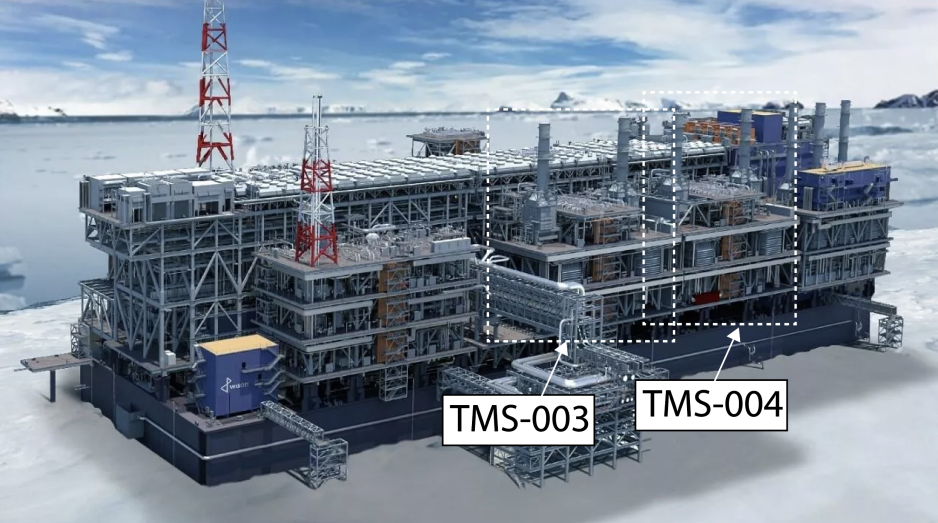
Diagram of Arctic LNG 2 production line showing location of modules TMS-003 and TMS-004 carried by Audax and Pugnax. (Source: Wison yard, with annotations by HNN)
“The argument that they may not know what the modules are for is nonsense, these steel structures delivered to Arctic ports do not have any other use but to be part of the gas liquefaction plants,” explains researcher Frédéric Lasserre, director of the Conseil québécois d’études géopolitiques (Quebec Council for Geopolitical Studies).
Referencing an earlier investigation by Le Monde Lasserre worked on, he says, “it was apparent that Red Box tried to conceal they were very involved in any wrongdoing.”
Bureaucracy can be your friend
According to Red Box, the modules are designated as “steel structures” using export Harmonized System (HS) Codes, a standardized 10-digit code to classify products for export by the International Trade Administration (ITA), a US government agency; seemingly turning them into benign towers of Chinese steel 40 meters tall immune to Western sanctions.
“They pretend they ignore the use of the delivered goods, quite likely indeed basing their position on the goods identification system. With good lawyers or customs brokers, there are likely faults in the system that they exploit,” concludes Lasserre.
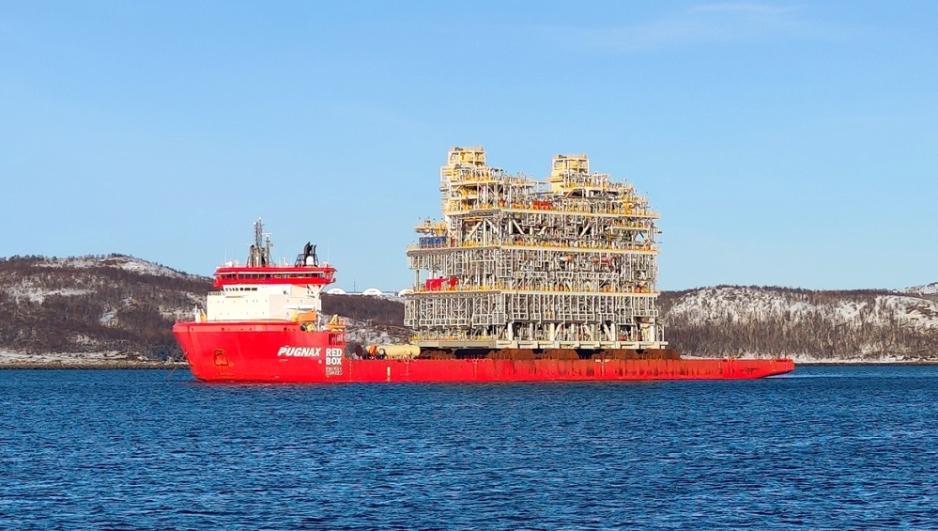
Pugnax carrying module TMS-003 or TMS-004 shortly before arriving at Belokamenka in Northern Russia. (Source: Belokamenka VK page)
Similar to Red Box, France’s Technip argued that some of the modules of the LNG plant could be sent to Russia without contravening sanctions “because they are not directly involved in the processing of LNG.”
It is also not uncommon for custom codes to differ between export and import, a procedure that has been used to circumvent sanctions.
An investigation by the Investigative Reporting Project Italy (IRPI) details how HS codes and the extremely complex international import and export rules have been used by Arctic LNG-affiliated companies to reclassify equipment from one category to another.
Red Box has faced no lack of scrutiny with multiple reports by HNN, Le Monde, the Financial Times, and others over the past year.
The fact that Red Box continues to escape secondary sanctions by the US – which just last week announced new measures against 500 companies and persons including several affiliated with Arctic LNG 2 – suggests Adkin’s statements that his company is not violating sanctions hold water; or that it has at least found the right legal channels to navigate the icy seas of international sanctions.


